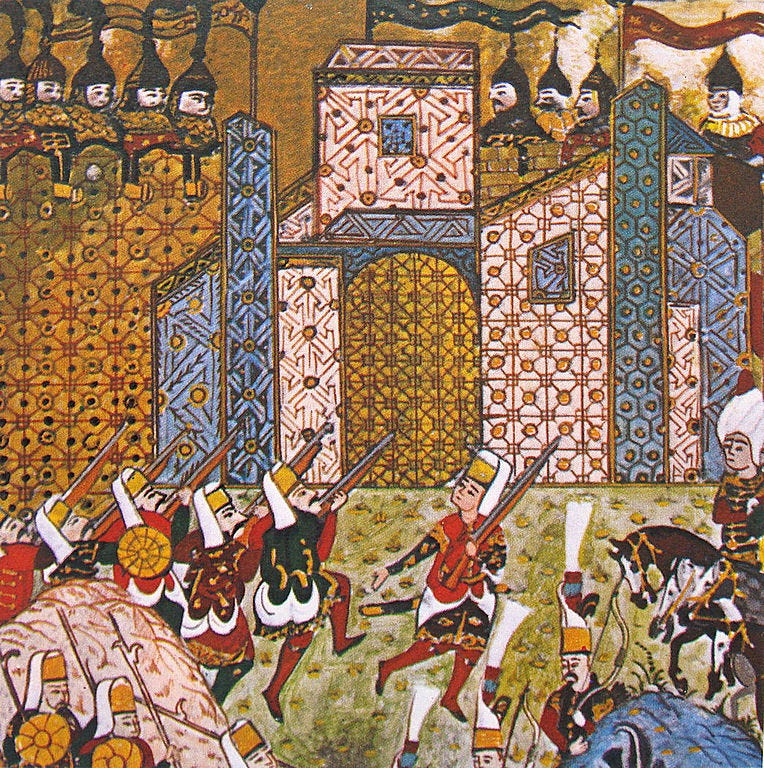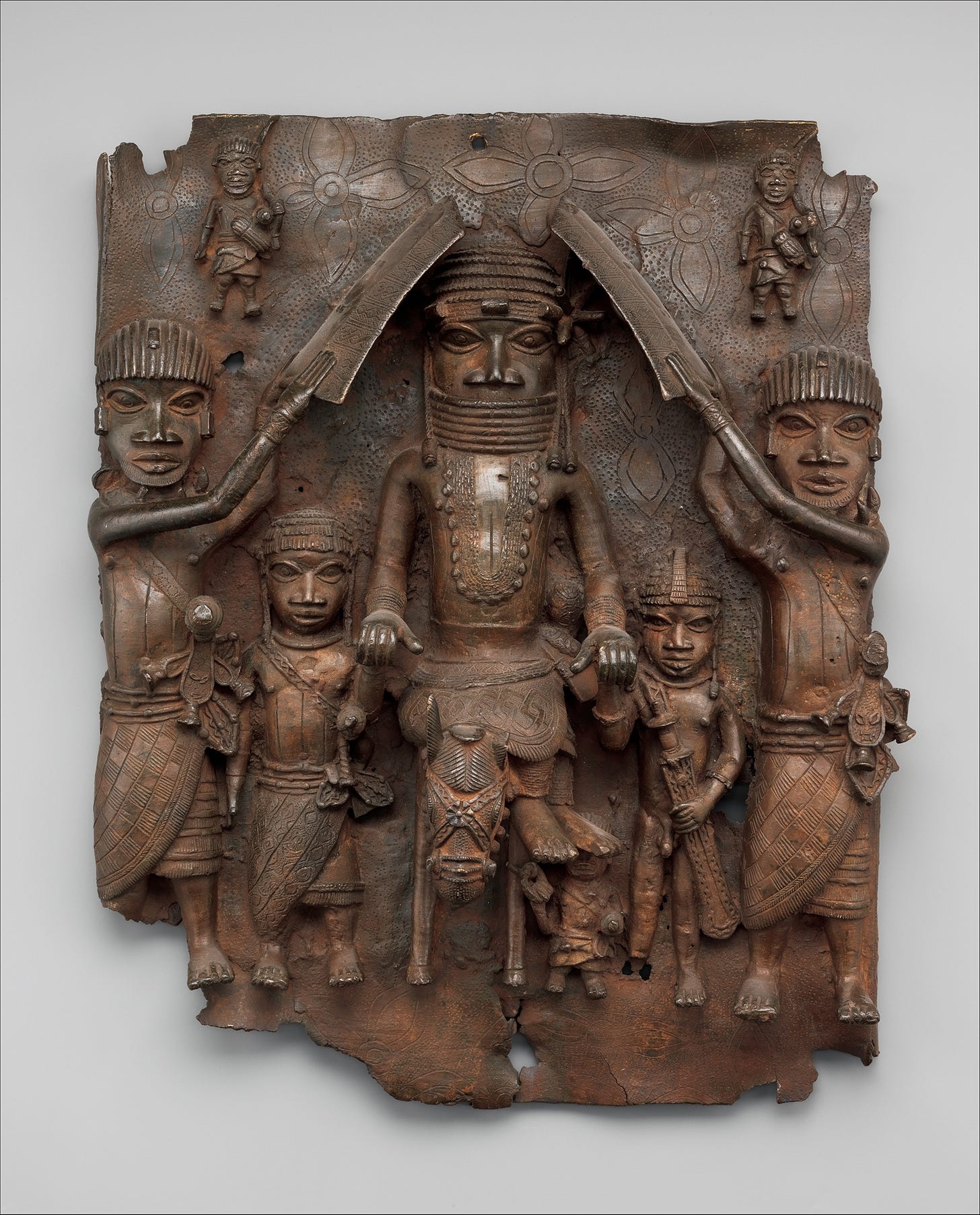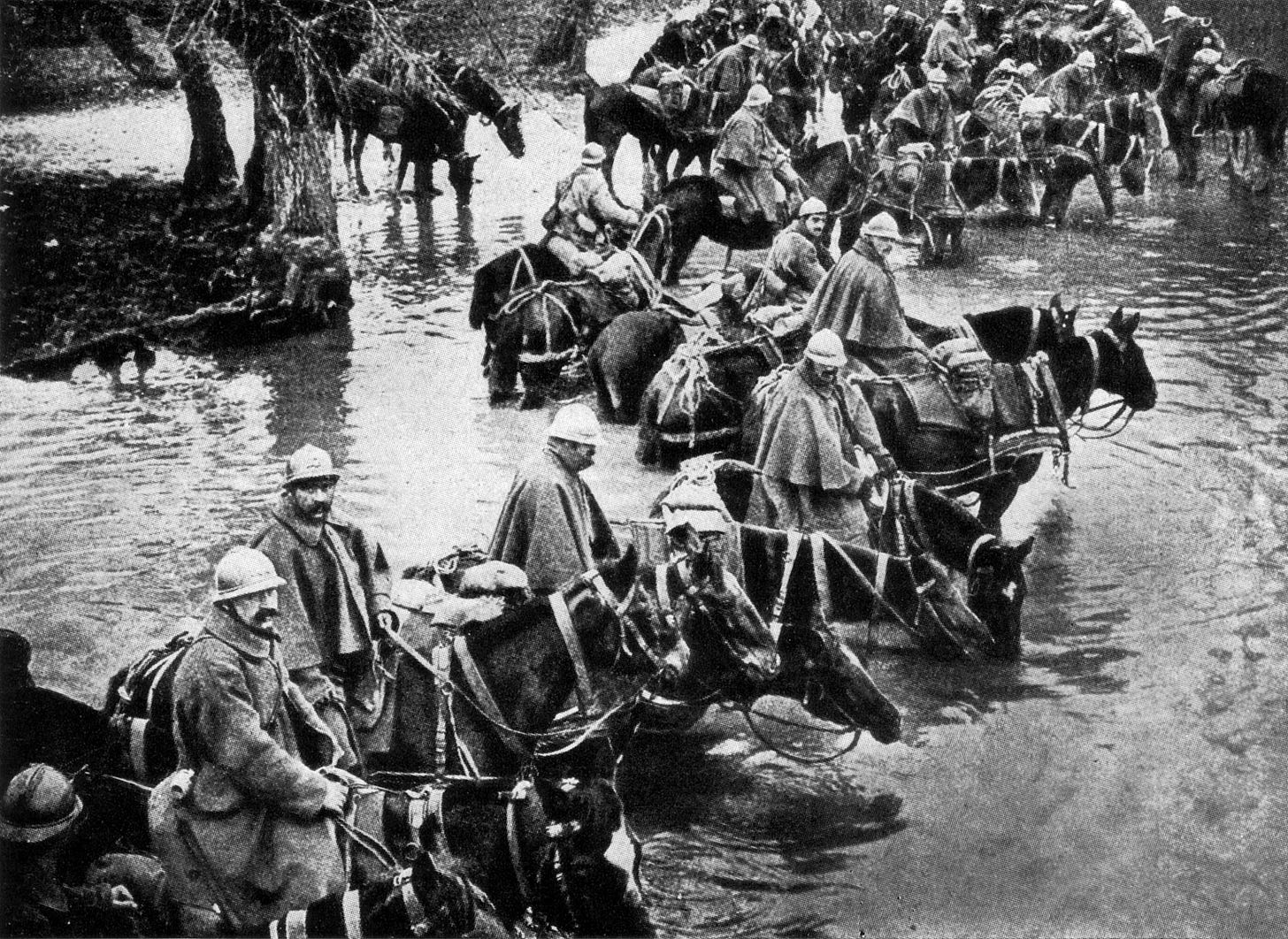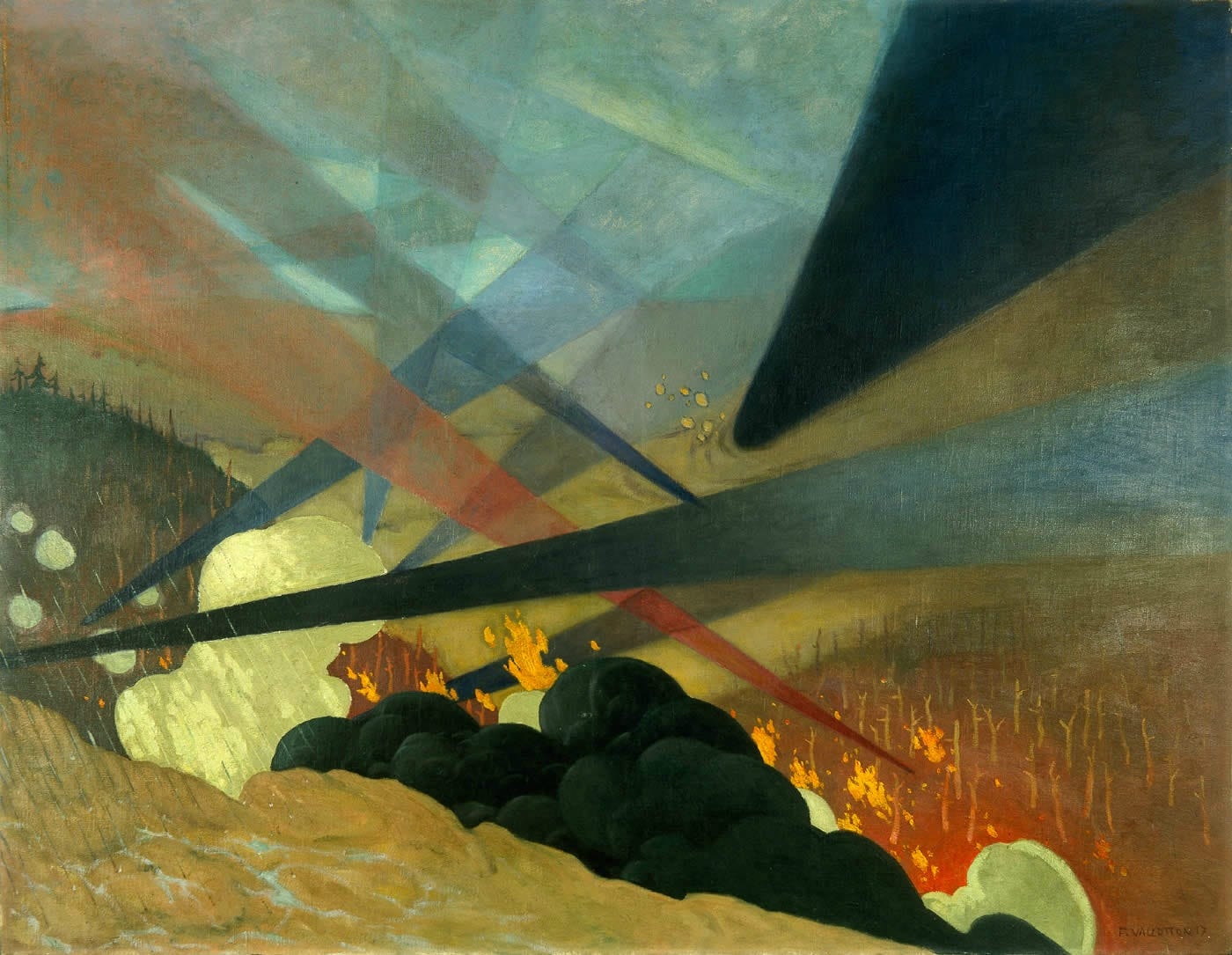From The Verge To Verdun
Games, the Great Divergence, and the financial instruments of violence work
Edited by Althea May Atherton
Most every evening, for the past few weeks, I’ve wound down from the day by throwing myself into a muddy pit and struggling to survive for a few minutes, in a unified struggle alongside and against named-but-anonymous soldiers. Some of the time this happens in Chivalry II, a 2021 sequel to the hyperbolic late medieval fantasy game that debuted in 2012. More often, this takes place in Verdun, a game released in 2015 which pits teams of players against each other in back-and-forth assaults across the trenches of World War I.
I had tried, for a brief time this summer, to throw myself with the same enthusiasm into Europa Universalis IV, a massive centuries-spanning nation-state simulator that fits in my far more familiar strategy game wheelhouse. (Among other things, there’s no latency penalty for a poor connection in a single player game.) What I found in Europa Universalis, which I’d hold as a success of the game even as the experience itself was far more stressful than relaxing, is that it simulated well the experience of having finite power, and being deathly afraid that any or every neighboring state would use their same finite power to bring about my end.
At night after playing these games, I worked my way through The Verge by Patrick Wyman. Wyman, a journalist turned public historian, honed his craft with the Fall of Rome and Tides of History podcasts, the latter of which is still going. (He’s also a member of Discontents, and you can listen to several of us talk to Patrick about his book on the second-ever episode of the Discontents podcast. To facilitate my participation in that episode, I received a pdf of the text.)
In The Verge, Wyman narrows his scope of history to the years 1490 through 1530. It’s the era Wyman locates as the origin of The Great Divergence, or the process that “transformed western Europe from outpost to the absolute center of the world order.”
Wyman continues:
Starting with the Netherlands and Britain— the so-called Little Divergence that preceded the Great— Europe first slowly and painfully and then very suddenly leapfrogged over its most aggressive competitors in technological achievement, political power, and economic output. The growth and impact of Europe’s rise make up the dominant historical processes of the last half millennium. Any understanding of our world that does not take these processes into studied consideration is incomplete: The legacies of colonialism and European domination are visible in every aspect of twenty-first-century life, from patterns of trade and economic development to sports and entertainment.
Wyman isn’t the first historian to name or locate the Great Divergence. The footnotes for that section alone lists eight different works, including 2000’s “The Great Divergence” by Kenneth Pomeranz. The term predates Pomeranz’ work by four years, when it was first coined by infamous political scientist and “Clash of Civilizations” author Samuel Huntington, though a contemporary review of Pomeranz’ book notes that the latter offers an explanation grounded in the specific evidence of documented human activity. 1
It’s violence at the extreme ends of the Divergence that I find myself reenacting between Chivalry II and Verdun. The former, while not exactly a Landsknechte simulator, captures the era of polearm feuding warfare well enough. This violence is high intensity, the fights are in service of the claims of lords, and the fictional factions of the game may as well map to any minor principality. Verdun, with its sweeping fields and technologically advanced slaughter, captures the feel of a small slice of The War to Temporarily Postpone All Wars. Both games have a maximum cap of 64 players per battle, and rely on automatic mechanisms to drive players back to the combat or risk character death. (This is much tighter in the narrow confines of Verdun, where it gets stylized as a punishment for desertion, than I’ve found in Chivalry II).
Before the Great Divergence, Europe was the site of infinitely small feudal squabbles. Afterwards, it became so central that wars fought amongst its states by necessity encompassed the whole globe. The how and why of that transformation is the puzzle at the heart of the Great Divergence.
Wyman stakes out a holistic answer, locating the origin of the divergence not in a specific factor but in a specific era where a conflux of factors combined to have an outsized influence.
Rather than focusing on a single variable, like a particular innovation or resource, The Verge points to a particularly eventful period: those four decades between 1490 and 1530. In this brief span, less than an average human’s lifetime, Wyman sees the roots of western Europe’s future metamorphosis from backwater to home of superpowers, thanks to the interplay between a series of convulsive transformations.
It was not one single process or variable that caused these intense bouts of disruption, but the meeting of several. Voyages of exploration, expanding states, gunpowder warfare, the proliferation of the printing press, the expansion of trade and finance, and their cumulative consequences— religious upheaval, wide-spread violence, and global expansion— collided, interacting with one another in complex and unpredictable ways. This was an explosive mixture of developments, each of which was deeply consequential in its own right. The brief, intense period of their combination and impact dramatically altered the course of world history, laying the groundwork for a future that bears a remarkable resemblance to our own.
To the extent Wyman sees a singular catalyst, he suggests it with “A Note on Money and Currencies” that opens the book. What facilitated the spread of capital-intensive projects across Western Europe was not so much a shared monetary system as a shared understanding of monetary systems, allowing roughly the same economic model to explain day wages for pikemen and Atlantic expeditions.
Weighing 3.56 grams, the Venetian ducat was one of the gold standards of its age, its fixed value transferable across the borders of domains and understandable across language barriers. That universality is seen across several historical purchases. For example, Columbus’ 1492 expedition cost 5,300 ducats. That same amount of money, applied to hiring soldiers, was enough to pay for the annual wages of 181 pikemen, or enough money to pay for 145 firearm-using arquebusiers over a year. 2
The course of warfare demanded larger and more expensive armies. Wyman’s work turns evocatively from a gentle note on currency to the visceral description of the 1527 Sack of Rome, where an unpaid army ransacked the city to pay back its lost wages. It is one thing to see the cost of paying a soldier as a sterile line on a ledger. It is wholly another to understand what it means when an army of those soldiers force payment using the tools of their trade.
Financing the money to hire an army without having all the cash on hand is but one example of the understanding of capital that Wyman identifies as central to the Divergence. He traces this phenomena to the lack of coins in circulation from the “Great Bullion Famine”, or a mid-1400s shortage of precious metal coins in circulation within Europe as those coins flowed outward to other economies, most notably those of Asia and the Middle East.
Wyman writes:
What Europe did have at this precise point in time was a set of economic institutions that were well suited to furthering each of those major processes that defined the coming era: exploration, state growth, gunpowder warfare, the printing press, and the consequences that went along with them. All of these things were expensive, capital- intensive processes and technologies. They depended on substantial amounts of money for initial financing, and even more to sustain them.
It’s this form of raising capital that Wyman situates as the unique factor, one that allowed monarchs to raise armies well beyond the capacity of their tax bases. The book's nine chapters each focus on a particular historical personage and how their relation to that capital drove their life.
Of the chapters, I found three particularly illustrative of the central thesis by way of contrast. A chapter focused on John Heritage, an English wool-buying middleman in Gloucestershire, shows this financing on as minute a level as primary sources are likely to have. Thanks to an accounting ledger Heritage purchased in 1501, which was somehow stored at and then rediscovered in Westminster Abbey in the 1990s, there’s a unique insight into these transactions. Heritage’s ledger documents the way his economic choices shaped his life and, especially, shaped the lives of his neighbors. Heritage negotiated a deal for the enclosure of fields owned by a local minor noble and once farmed by tenants, a choice that created wealth for both the noble and Heritage. Wyman pairs this with an acknowledgement that this meant causing direct, material harm to sixty people in the very community Heritage had grown up in. A financial system is as much those human consequences as it is those shifting balance sheets, and Wyman does yeoman’s work connecting the two.
The chapter on Götz von Berlichingen and the Military Revolution is focused on a small-time man-at-arms. It is the best illustration I’ve read of how an existing market for violence work facilitated everything from street-level violence between merchants all the way up to city-ruining violence between kings. Wyman is clear to illustrate that while Berlichingen’s mode of violence, strapping on armor and a lance, was on the way out, the way of financing his violence was durable, part of a european-wide mercenary market that predated his era and would continue well beyond it.
Soldiers paid for violence work in coin had long since supplanted armies raised on feudal obligations, and the scale this afforded the wealthy shifted the nature of battles. Pikes and arquebuses were useful against armored cavalry in mass numbers and with discipline, both factors encouraged by a market for professional soldiers and hard to muster on a small scale. Heavy cavalry still had its role in battle but faced grave dangers in war at scale; Wyman opens Berlichingen’s story during the battle in which a cannon took his right arm. His ability to persist as a professional sell-sword owes equal parts to the continued role of cavalry in big campaigns, and the specific role of such violent professionals in much smaller fights, where cannon would be beyond the means of either buyer, and where massed formations against armor were unheard of.

On the entire opposite end of scale, a chapter about Suleiman the Magnificent offers the most contemporaneous answer as to why the Divergence mattered. The Ottoman state, far more capable of marshaling force and extracting wealth from its subjects without courting ruin, produced one of the longest lived empires in modern history. (That Ottoman soldiers would be as likely contemporaries on the battlefields of both Chivalry II-era warfare and Verdun is not lost on me. Ottoman history has not just some of the longest serving named weapons in existence, but also the longest serving in the military of a single state.)
What I find especially fascinating about this history is how hard it is to model these kinds of processes in a way that repeats the results. Europa Universalis IV, focused on the macro scale, attempts to capture some of this. A game event called “The Great Bullion Famine” applies to every Catholic country with a capital in Europe that produces gold before 1490. The event doesn’t cause any hardship outright, but it does reward the first such country to capture a gold-producing province outside of Europe with a century-long economic bonus afterwards. It’s not quite hard-coding a conquest of the Americas into the game, but it at least suggests a causal relationship.
A harder problem for Europa Universalis to resolve as it attempts to simulate a history in which the Great Divergence took place is how it weights that outcome in its game mechanics. For this I’m relying heavily on an excellent series of posts by historian Bret C. Devereaux, which examine what lessons Europa Universalis has as a teaching tool. 3
One of those limitations is in how the game models trade. The game’s trade system allows states to extract some portion of wealth from control of trade nodes, which all follow fixed one-way paths. The closer a node is to the end point, the more wealth it provides to the states’ that control it. The nodes all start in places like the Amazon, the Katsina region of modern Nigeria, California, the Hudson Bay, and Siam, and others, where they offer little value to local powers. The nodes end in three points, all in Europe: Venice, Genoa and the English Channel.
As Devereaux notes, calling this system “trade” when it’s at best modeling extractive flows is perhaps in line with the mercantilist thinking of the era, but it misses the way that trade was, well, trade. As just one example, while the game can hard-code a bullion famine, it cannot explain in its trade mechanics how that bullion famine came to be, and who benefited from it. As Devereaux notes, trade of Chinese goods west not only benefited the merchants making the sale, it also poured bullion into the coffers of the dynasties governing China. This is one of the imbalances in global flows of trade and wealth that makes the Divergence worthy of study, rather than assuming it as a natural outcome.
“The major problem that it really presents is that it hard-codes a massive deterministic geographic advantage for Europe which just didn’t exist,” Devereaux writes. “The directions and flows that trade took were highly ‘contingent’ (that is, subject to change based on events and conditions); it could have looked very different and we know this because it did look very different.”

Both Devereaux and Wyman cite Janet L. Abu-Lughod’s 1989 book “Before European Hegemony: The World System A.D. 1250-1350” as an example of how the world economy was structured before the Divergence. Understanding how and how recently the world was different is, I think, an essential part of the story of how we arrived at the present. Without it, we’re left with ornithologists reading geographic determinism into the spread of domesticated animals, with that alone functioning as a holistic explanation for what history properly records as a series of deeply human processes. (I recommend The Verge as a useful corrective for anyone who ever read Jared Diamond’s Guns, Germs, and Steel and found it placed too much emphasis on geography alone and too little on human systems or choices. ).
While Europa Universalis IV has a system of loans and debts for nations, my best understanding is that it’s the same mechanism across all factions in the game. If the Great Divergence has its origins in both a regional shortage of coinage, and in the proliferation of financial mechanisms within that region to fund capital intensive projects beyond that, as Wyman argues, then Europa Universalis IV is unable to model either half of the equation.
Those instruments are crucial to understanding history because of the specific way that coin shortage ended. As Wyman argues at Defector, Columbus himself was a replacement-level historical figure, “a representative of a broader Type of Guy who was common along the sea-lanes of the western Mediterranean and Atlantic in the closing decades of the 15th century.”
It’s important that Columbus’ specific villainy upon his encounter with the peoples of the Caribbean is rightly known and reviled (as it was at the time). It is also worth stating that his style of violence and plunder in the name of profit and fame was fairly common among his specific peers, and had previously been visited by European sailors upon the people of the Azores and the Canary Islands, as well as contemporaneously visited on people of the West African coast and the Indian Ocean.
What makes the violence here unique is the way the plunder of the Americas fed new wealth directly to the most capitalized monarchs in Europe, who then took that wealth and the existing financial mechanisms at hand and spent it at exponential rates. Wyman closes out The Verge with the story of Charles V, the recipient of the largess of the plunder of Inca and Aztec wealth.
The Ottoman Empire’s Suleiman, a contemporary of Charles V and himself also a grandson inheritor of great plunder, had a more durable financial base for all his projects of conquest than the hodge-podge of loans Charles V used to keep afloat. (Though, as Wyman notes, the Ottoman state Suleiman inherited was on its last stretch as a conquering state, and its system never quite adapted to the permanent loss of conquest-based income.)

Charles V could have theoretically used this wealth to build a more durable basis of income for his empire, but he did no such grand rearranging. The plundering of the Americas, with a cataclysmic human toll, transferred centuries of accumulated wealth into Charles’ coffers, which he then spent immediately on his ongoing wars.
“The 120,000 gold pesos Cortés sent in 1524, following his barbarous conquest of Tenochtitlan and the Mexica heartland, immediately went to pay for the ongoing war in Italy,” Wyman writes. “The brutal deaths of tens of thousands of indigenous Americans was enough to fund Charles’s martial habits for a few months, after which the emperor was once again out of money.”
It is this economy of violence that stuck with me in The Verge. A tremendous amount of violence uprooting durable economic arrangements, ones that had persisted for centuries, into explosive military campaigns for incredible short-term gain is not the whole of the story, but it’s a central part.
As a work of popular history, I found The Verge deeply compelling, deftly handling the complexity of the subject matter and keeping an eye on the human consequences for figures who don’t have the cash on hand to commission boisterous biographies as a vanity project.
As I pass the time indoors between the slowly checked pandemic and the wildfire-smoke filled skies,The Verge rattles in the back of my head whenever I load up a halberd-wielding footman or a Lee Enfield toting rifleman and rush into abstract combat. In the name of return on investment, the long arquebus of history has been bent for centuries towards economies of violence work. Plotting a path out means knowing how that path led to the present.
I have no affiliate link for the book to plug, but it’d be remiss after spending all this time talking about it to leave you without a direct way to buy it. Here’s a link to the publisher’s page, and here’s one to Bookshop.org.
Thank you all for reading this. I genuinely enjoy writing these newsletters roughly every fortnight and I will keep writing them in some form for as long as I can sustain myself doing so.
If you’re in the mood for more free newsletters, may I recommend checking out what we’re doing over at Discontents? For our August 2nd issue, I wrote about the Moon and self-driving cars and what sensor error means when machines enter real life.
It’s worth noting that the other name for “The Great Divergence,” which predated it by decades in the literature, is “The European Miracle,” an even more fraught starting point for explaining the difference.
Using figures from the book: a pikeman was paid the equivalent to 2 ducats every 25 days, or 29.2 ducats in a year. An arquebusier was paid 1 ducat every 10 days, or 36.5 ducats/year. As someone who converts present-day expenditures into F-35 equivalent units, being able to do this math delights me.
My rough understanding is that the simulation best captures the driving logic of security competition in a multipolar and anarchic state environment, itself a tall task, with some deeper limitations elsewhere. In my limited playthroughs, I certainly found the game’s security dilemma so compelling that being deposed and quitting came as a relief.





